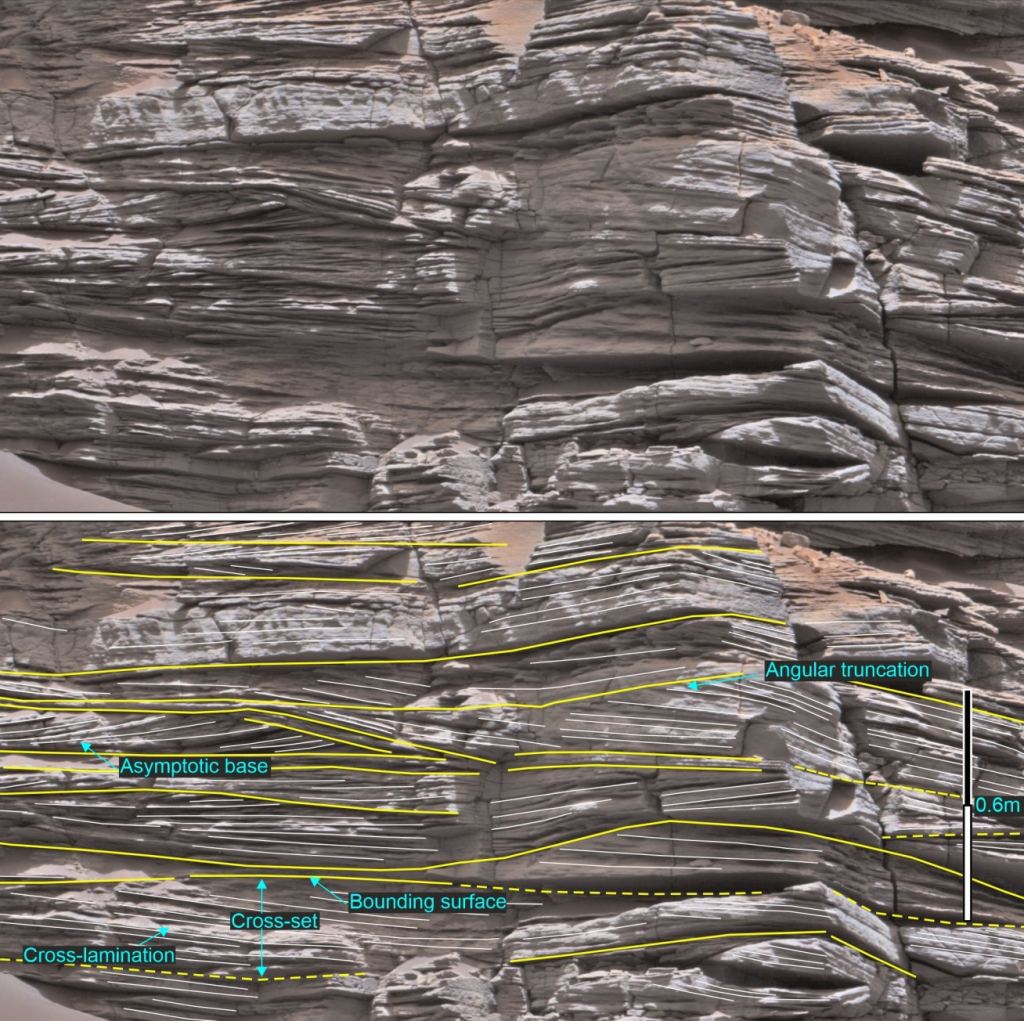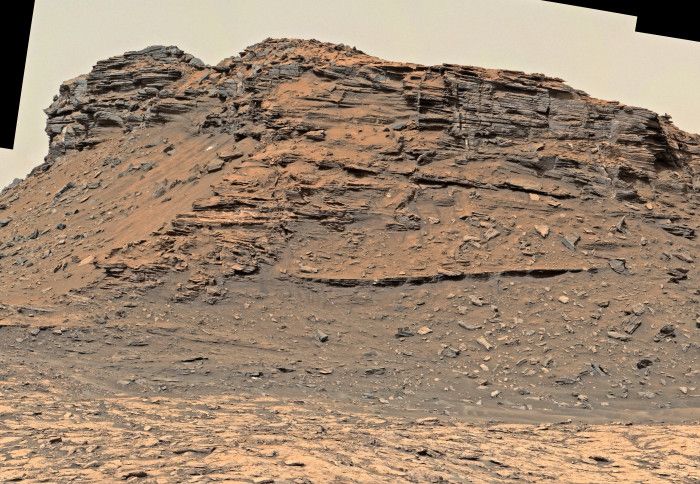Dune Fields in Gale Crater Tell the Story of Mars’ Shifting Climate Over Eons
By Andy Tomaswick
Rocks can tell us a lot about a planet. On Earth, the study of geology has been around for hundreds of years and has resulted in such scientific findings as the theory of plate tectonics and the discovery of dinosaur fossils. Geology on Mars has not had as long and storied a history, but with the rovers that have landed on the planet in the last few decades, Martian geology has started to bloom. Curiosity, one of those rovers, has done a particularly good job at documenting the rock formations in its neighborhood of Gale crater. Now researchers led by a team at Imperial College London have published a paper using data from Curiosity that detail a set of ancient dunes on Mars that provide some insight into the planet’s former habitability.
Sand dunes are a common occurrence on both Earth and Mars. On Earth they are thought of as shifting features that literally change with the wind. On Mars, there is so environmental little activity that sand dunes are much more stationary and can transform into rock.

Credit: Imperial College London
That is exactly what happened to a series of sand dunes in Gale crater, which are now known as the Stimson formation. These rocks which were originally formed as dunes overtop of the rocks deposited in the crater when it was a lake. They then stratified into clearly discernible layers next to Mount Sharp, the highest part of Gale crater that wasn’t eroded away when it was filled with water.
One striking feature of the stratification was that the dunes seemed to have been caused by winds blowing in two different directions. Specifically they indicated a feature known as “cross-bedding” where nearby dunes pile on top of one another. Usually this involves two dunes that are deposited by competing winds that attempt to lay sand in different directions.

Credit: NASA / JPL / University of Arizona
Those winds were likely active well after the lake bed dried up and the environment became much more arid. Most likely the crater wouldn’t have been very hospitable to life during the deposition of the dunes, and the winds carrying abrasive sand with them might have even scoured away evidence of any previous life that there was.
But all hope is not lost for a potentially previously inhabitable Gale crater. The solidified dunes only make up a part of the wall of Mount Sharp, and there are still other geological processes at work higher up the mountain. As researchers continue to comb over the pictures sent back from Curiosity they will continue to contribute to the science of geology on Mars. Eventually all of that new knowledge will help contribute to the answer of one of the most sought-after questions in space exploration – did life ever arise on Mars?
Learn More:
ICL – Mars’ changing habitability recorded by ancient dune fields in Gale crater
JGR Planets – A Rock Record of Complex Aeolian Bedforms in a Hesperian Desert Landscape: The Stimson Formation as Exposed in the Murray Buttes, Gale Crater, Mars
UT – Curiosity Finds A Region of Ancient Dried Mud. It Could Have Been an Oasis Billions of Year Ago
Lead Image:
Part of Gale Crater that is still being explored by Curiosity
Credit: NASA
The post Dune Fields in Gale Crater Tell the Story of Mars’ Shifting Climate Over Eons appeared first on Universe Today.

May 4, 2021 at 05:33PM
via Universe Today read more...

Post a Comment